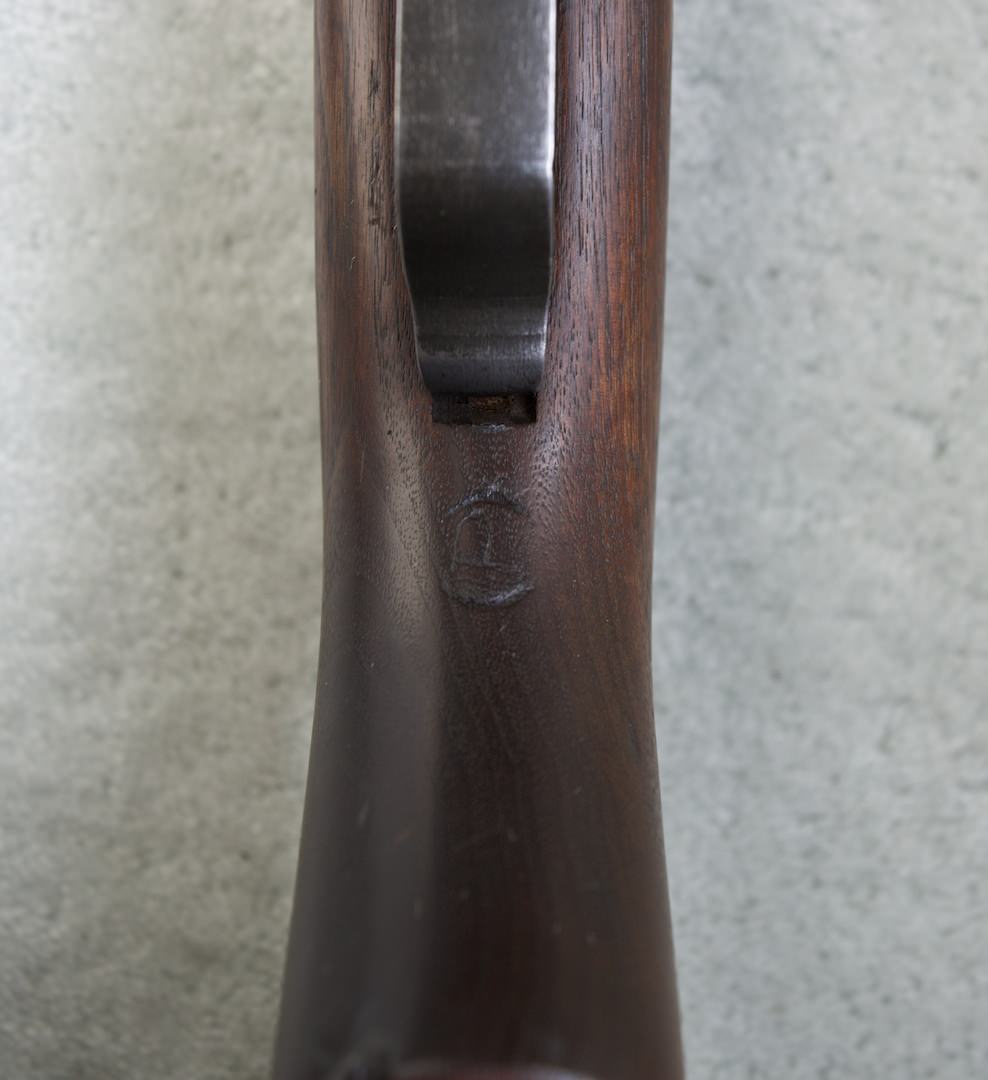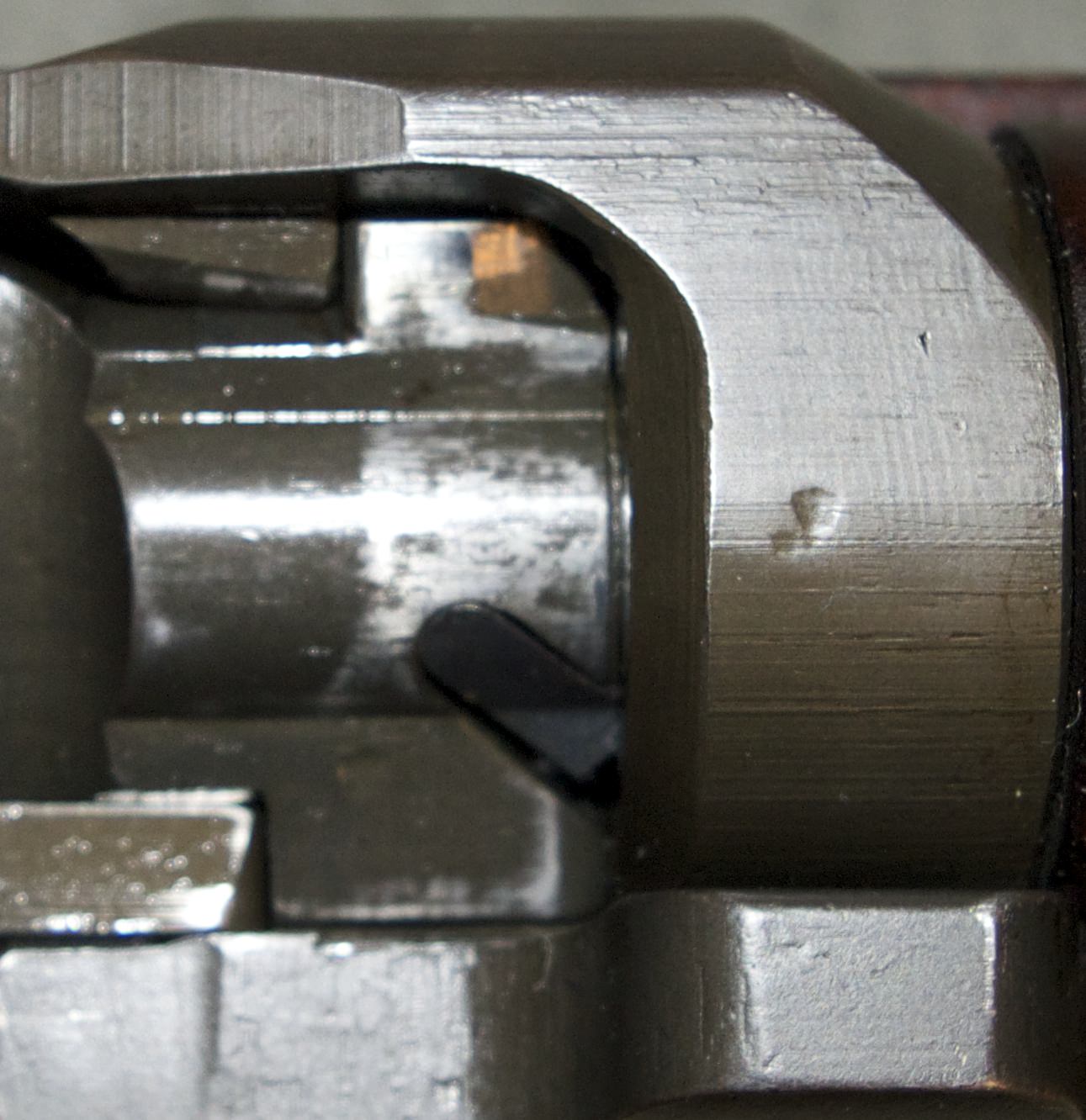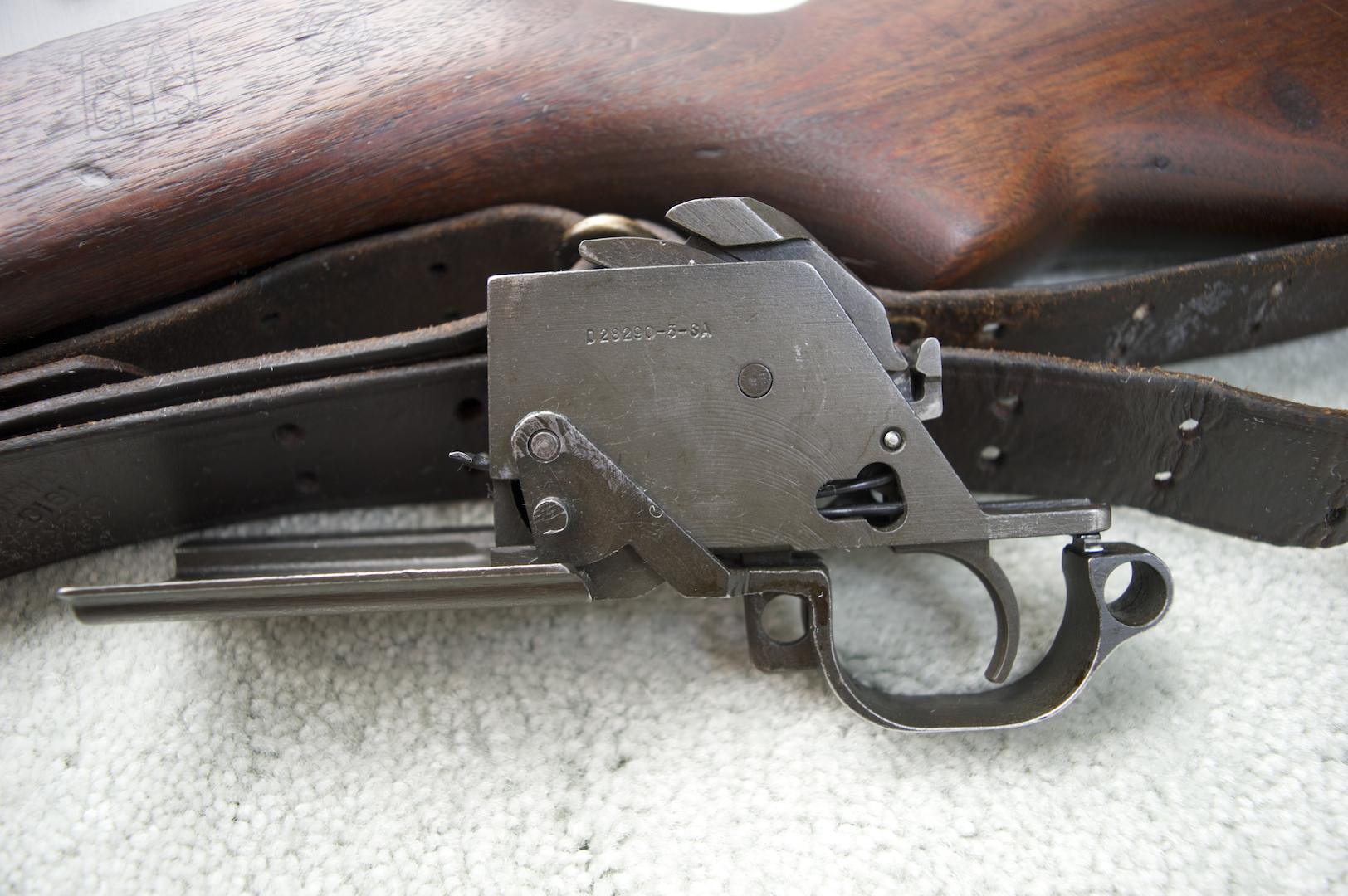student of history
CGN Regular
Paul's recent thread has given me the inspiration to post a few images of a rifle that's been in my collection for a little while.
This particular example is 1 of about 38,000 which was sent to the English during the lend lease program before the United States entered the war. It is manufactured in September of 1941 and for this reason, displays a number of early "obsolete" parts which were quickly replaced on later examples. The vast majority of M1 Rifles which were manufactured at this time were lost in the jungles of the Pacific Theater so the lend leased rifles are often considered to be the closest thing we have today to snap shots of M1 production during late 1941 to early 1942.
For the most part, I'll let the pictures do the talking, but there are a few interesting characteristics worth noting. First is the early GHS cartouched stock. These were used from late 1940 to mid 1942, but what makes this one especially interesting is that it is a long channel stock. The transition from long to short channel was made at around s/n 400,000 (or so we think).
The next few interesting bits are the short pinion flush nut rear sight assembly, with checkered elevation knob (this pre-dates lock bar sights). The half rounded firing pin in the 2 SA bolt, the uncut 3SA operating rod, grooved rear hand guard clip, narrow base gas cylinder with front sight seal intact and early trigger guard with drawing numbers.
Finally I'll note that this rifle does not have any red paint on the hand guard, but is easily recognized as a lend lease when the operating rod has been pulled back. Here you'll find a slew of British markings.
So without further delay, here are some photos.
- Chris






















This particular example is 1 of about 38,000 which was sent to the English during the lend lease program before the United States entered the war. It is manufactured in September of 1941 and for this reason, displays a number of early "obsolete" parts which were quickly replaced on later examples. The vast majority of M1 Rifles which were manufactured at this time were lost in the jungles of the Pacific Theater so the lend leased rifles are often considered to be the closest thing we have today to snap shots of M1 production during late 1941 to early 1942.
For the most part, I'll let the pictures do the talking, but there are a few interesting characteristics worth noting. First is the early GHS cartouched stock. These were used from late 1940 to mid 1942, but what makes this one especially interesting is that it is a long channel stock. The transition from long to short channel was made at around s/n 400,000 (or so we think).
The next few interesting bits are the short pinion flush nut rear sight assembly, with checkered elevation knob (this pre-dates lock bar sights). The half rounded firing pin in the 2 SA bolt, the uncut 3SA operating rod, grooved rear hand guard clip, narrow base gas cylinder with front sight seal intact and early trigger guard with drawing numbers.
Finally I'll note that this rifle does not have any red paint on the hand guard, but is easily recognized as a lend lease when the operating rod has been pulled back. Here you'll find a slew of British markings.
So without further delay, here are some photos.
- Chris






















Last edited:











































































